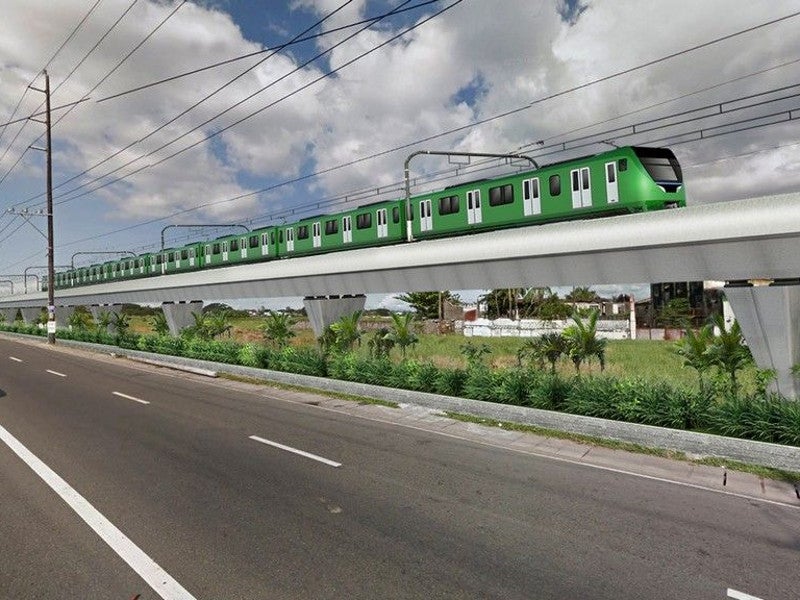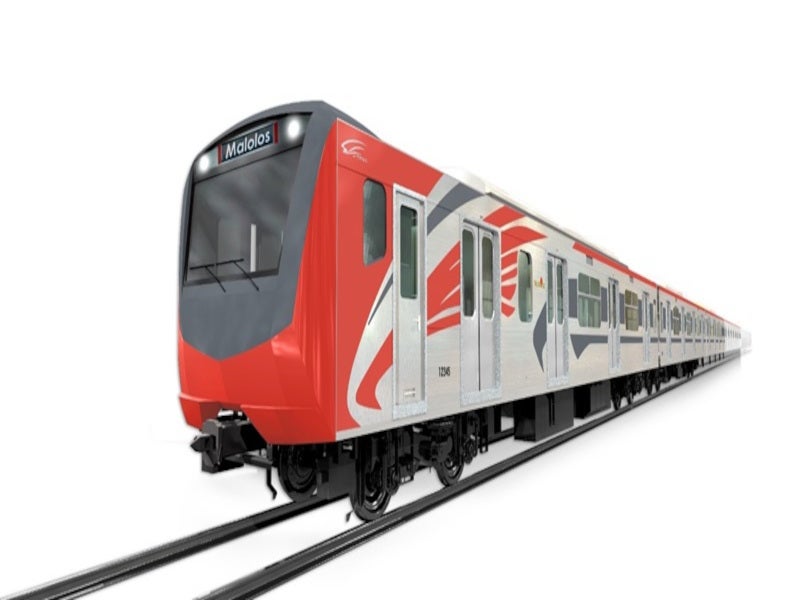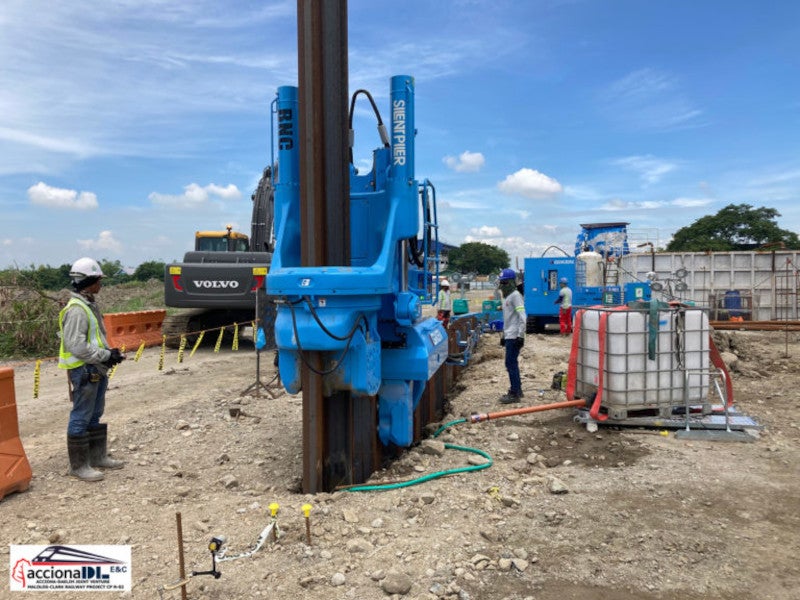The Malolos-Clark Railway Project (MCRP) is a 53.1 km-long railway line being constructed to connect Malolos, Bulacan to the Clark Economic Zone and Clark International Airport (CIA) in central Luzon, the Philippines.
The project is part of the North-South Commuter Railway (NSCR) project, a 163km suburban network that will connect Clark, Pampanga and Calamba City, Laguna. The initiative is a cornerstone within the large-scale infrastructure development programme known as the “Build, Better, More” programme promoted by the Philippine government.
The elevated MCRP railway line is being developed through Japan’s Official Development Assistance programme, facilitated by a loan aid agreement between the Department of Transportation (DOTr) and the Japan International Co-operation Agency (JICA). It will be the first airport express railway service in the country.
MCRP is expected to reduce the travel time between Manila and Clark International Airport to one hour upon its completion in 2025, and reduce greenhouse gas emissions by more than 60,000t per year.
Malolos-Clark railway project details
TMCRP is being constructed as two rail segments: the 51.2km Malolos-Clark section connecting Malolos City to the Clark regional growth centre and Clark International Airport, and the 1.9km Blumentritt extension connecting Solis and the Blumentritt stations in Manila District I (City of Manila).
The project includes the construction of an underground access section to the Clark International Airport, which will offer short connections, and a station at the airport terminal. It will also include bridges and viaducts for the elevated section of the railway line.
MCRP will have a total of seven elevated stations featuring two separate platforms with a right-of-way width of 60m.
Stations will feature elevators and escalators for easy passenger movement and automatic fare control systems, including ticket vending machines, gates, fare adjustment machines, data collecting machines and office booking machines.
Rolling stock and ridership
Electric multiple units will run on the new line in three categories, including commuter train, express commuter train, and airport limited express train. The maximum speed of the trains will be 160km/h.
Malolos-Clark railway project infrastructure
MCRP will include a maintenance depot spread across an area of 40 hectares (ha) in the Sacobia area near the airport. The facility will also serve as a central command office for operations on the mainline.
The depot layout will include an operational control centre, main workshop, car washing track, light repair shop, track maintenance base and stabling yard.
An administration building will also be constructed, housing control rooms, offices, kitchens, toilets and a workshop.
MCRP financing
The total estimated cost of the project is $6.1bn, which is being co-financed by the Asian Development Bank (ADB) and JICA through a multi-tranche financing facility.
ADB signed a $1.3bn loan agreement with the government of the Philippines for the construction of the MCRP in July 2019, which is the first tranche of the total $2.75bn loan facility agreed to be provided by the bank for the project. Two additional tranches were released by the bank by 2022.
ADB is mainly financing the civil works of the project including stations, bridges, viaducts and tunnels. JICA is providing $2bn to finance the rolling stock and railway systems.
Malolos-Clark railway project benefits
MCRP will serve approximately 342,000 passengers per day along the Manila-Clark corridor and up to 696,000 passengers to Calamba. It will minimise traffic congestion in and around Metro Manila, as well as reduce air pollution and transport and logistics costs while boosting economic growth.
It will create employment for 1,400 people during the operational phase.
NSCR project details
The North-South Commuter Railway (NSCR) project involves the building of approximately 110km of primary track, accommodating 27 new stations. It comprises a 55km segment in the south, from Tutuban to Calamba in Laguna Province, and a 51km segment in the north, from Malolos to Clark International Airport in Pampanga province.
The Calamba station will be linked to the PNR South Long Haul line, which is set for expansion to the southernmost point of Luzon Island, enhancing connectivity between Manila’s outskirts and the metropolitan network.
The NSCR is set to be finalised between 2024 and 2028.
Contractors involved
Oriental Consultants Global, a company based in Japan, received a contract to provide a detailed design for the Malolos-Clark railway project in May 2018. DOTr has engaged the Greater Capital Railway Consortium (the Department of Transportation and Philippines National Railway) to serve as the principal consultant, tasked with providing support for project implementation and assuming the overarching responsibility for supervising, monitoring and reporting on the implementation of the environmental management plan.
Acciona, an infrastructure company based in Spain, will build a total of 6,186 segments, each 2.5m long and weighing approximately 45t.
In August 2020, two civil works contracts worth approximately $728m were signed by the government for the project. One contract, granted to the joint venture of Acciona Construction Philippines from Spain and EEI, encompasses the construction of approximately 6.3km of primary railway lines and 1.6km of depot access lines, featuring an underground railway station at Clark International Airport.
The second contract, awarded to POSCO Engineering and Construction from South Korea, involves the establishment of a 33-ha depot and a railway operations control centre in Mabalacat, Pampanga.
In September 2020, Hyundai E&C, in partnership with Donga Geological Engineering and local construction company Megawide, was awarded a $573m contract for Section 1 of the Malolos to Clark Railway project. The contract involves the construction of two railway stations and a 17km elevated bridge.
In March 2023, Mitsubishi chose Colas Rail, a consortium led by Alstom, to design and build the electrical and mechanical systems and track works for the extension of the NSCR line in the Philippines. Colas Rail will handle the design, supply, installation, testing and commissioning of the tracks and overhead contact systems.
Alsina Philippines supplied the formwork for the pierheads, columns and pile tops for the Malolos-Clark Railway line.
The DOTr awarded Sumitomo a 72.5bn yuan ($629m) contract for the delivery of 304 train cars for the Malolos-Clark railway project and the NSCR line in March 2022. The contract will cover the design, construction, testing, delivery, warranties, spare components, special tools and crew training, with the contract in effect for 78 months.
The vibration and noise-free Press-in Method, employing GIKEN’s SILENT PILER™ press-in and extraction machinery, has been selected for implementation in the project. It allows work to progress without disrupting the daily lives of residents. In April 2022, a F201A SILENT PILER, designed for the installation of 600mm-wide U-shape sheet piles, was delivered to the local company BNC Construction. The equipment is being used to construct 510 15-30m long U-shaped sheet piles to form retaining walls for new bridge piers in the city of San Fernando.
Other contractors involved in the project include Vinh Hung Trading Consulting and Construction, Daelim Industrial, Italian-Thai Development, SYSTRA and Rúbrica Engineering.




